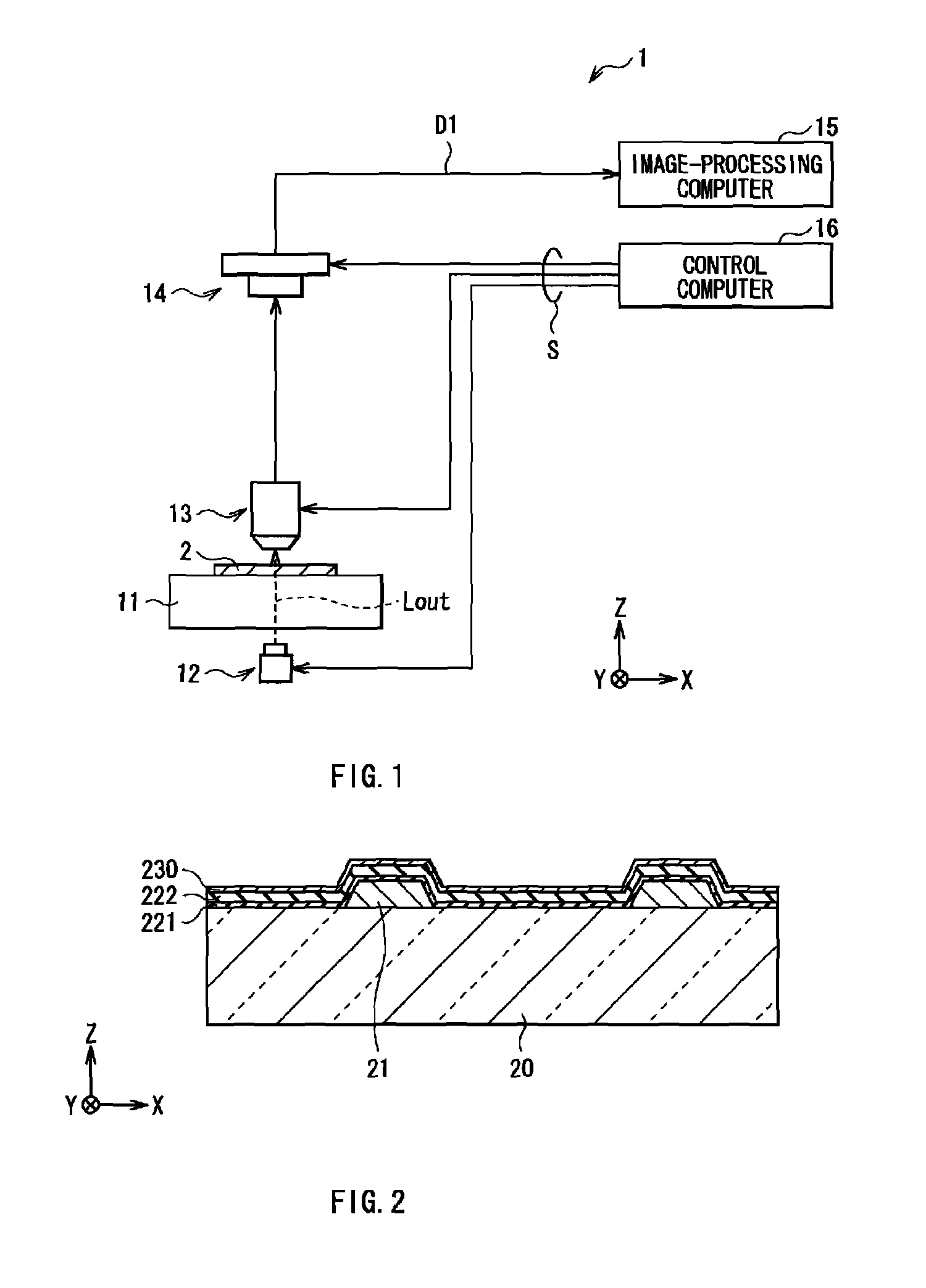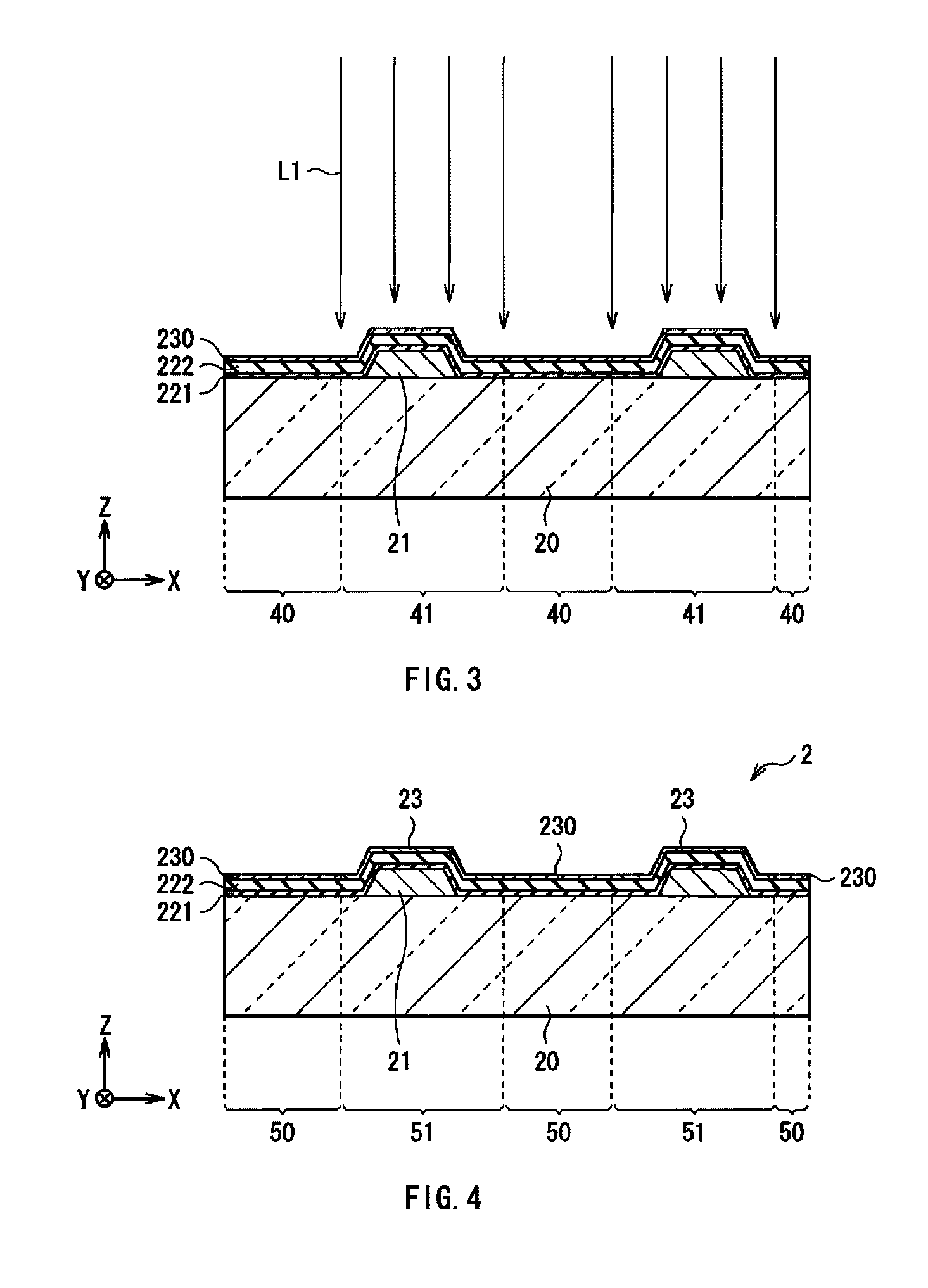Method of forming semiconductor thin film and semiconductor thin film inspection apparatus
a technology of inspection apparatus and semiconductor, which is applied in the direction of individual semiconductor device testing, semiconductor/solid-state device testing/measurement, instruments, etc., can solve the problem of difficult monitoring of a fine difference in power density on the plane of inevitably arises a size or intensity of laser light applied to an object to be irradiated, and the effect of reliable screening
- Summary
- Abstract
- Description
- Claims
- Application Information
AI Technical Summary
Benefits of technology
Problems solved by technology
Method used
Image
Examples
modification 1
[0090]FIG. 12B is a sectional view (a Z-X sectional view) for describing an inspection process according to a modification 1. In the modification, the laser light L1 is applied to a light-absorbing layer 231 on the a-Si film 230 in a step of forming the p-Si film 23, thereby a heating process is performed indirectly on the a-Si film 230. In other words, in the above-described embodiment, for example, as illustrated in FIG. 12A, the laser light L1 is applied to the a-Si film 230 in the step of forming the p-Si film 23, thereby the heating process is performed directly on the a-Si film 230. On the other hand, in the modification, the heating process is performed indirectly on the a-Si film 230.
[0091]In the modification, measurement in a state in which the light-absorbing layer 231 is still laminated may be performed. In other words, transmittance shows a strong correlation between before and after the removal of the light-absorbing layer 231, so when a corresponding table is formed pr...
modification 9
[0101]FIGS. 21A and 21B are illustrations for describing an inspection step according to a modification 9, and FIG. 21A illustrates a plane configuration example of the Si thin film substrate 2 used in the inspection step in the modification, and FIG. 21B illustrates side configuration examples of the movable stage 11 and the Si thin film substrate 2 used in the inspection step in the modification.
[0102]As illustrated in FIGS. 21A and 21B, in the modification, a reference level measurement region 52 and a zero measurement region 53 are preliminarily arranged in predetermined positions on the Si thin film substrate 2 (the transparent substrate 20) (refer to FIG. 21A) or on the movable stage 11 on which the Si thin film substrate 2 is mounted (refer to FIG. 21B).
[0103]The reference level measurement region 52 is a measurement region for obtaining a reference image with respect to a picked-up image (the transmission image or the reflection image) on the basis of the irradiation light L...
PUM
 Login to View More
Login to View More Abstract
Description
Claims
Application Information
 Login to View More
Login to View More - R&D
- Intellectual Property
- Life Sciences
- Materials
- Tech Scout
- Unparalleled Data Quality
- Higher Quality Content
- 60% Fewer Hallucinations
Browse by: Latest US Patents, China's latest patents, Technical Efficacy Thesaurus, Application Domain, Technology Topic, Popular Technical Reports.
© 2025 PatSnap. All rights reserved.Legal|Privacy policy|Modern Slavery Act Transparency Statement|Sitemap|About US| Contact US: help@patsnap.com



